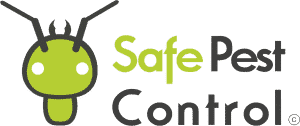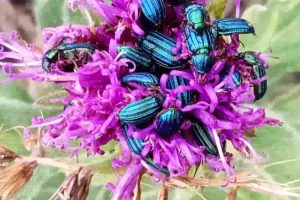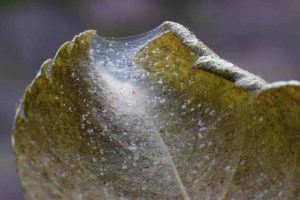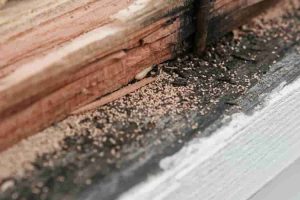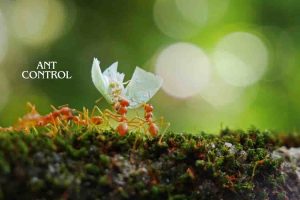The Effectiveness of Non-Toxic Pest Control Methods in Modern Homes
Non-toxic pest control methods offer an effective and ecofriendly way to address pest problems. These methods not only focus on eliminating pests but also ensure the safety of our environment, pets, and ourselves. By opting for non-toxic solutions, we can effectively manage pests without the harmful impact of chemical pesticides.
Our ecosystems are delicate, and using traditional pest control methods can disrupt local wildlife and natural processes. Non-toxic approaches, like traps, pheromone-based controls, and natural predators, work with nature instead of against it. This means we can maintain a balanced environment while keeping pests at bay.
Moreover, safeguarding our health and the well-being of our pets is a top priority. Non-toxic pest control methods utilize organic products that are harsh on pests but gentle on humans and animals. This approach ensures we don’t have to compromise safety for effectiveness in our pest management efforts.
Fundamentals of Non-Toxic Pest Control
Non-toxic pest control methods are essential for protecting both our health and the environment. These methods leverage natural means to manage pests without relying on harmful chemicals.
Understanding Non-Toxic Pest Control
Non-toxic pest control uses strategies that don’t rely on synthetic chemicals. These methods include traps, pheromone-based controls, and natural predators. Sticky traps, bait traps, and live traps can target specific pests like fruit flies or pantry moths. Pheromone-based controls use scents to attract pests into traps, reducing their populations without harming other species.
Natural predators, such as ladybugs or predatory mites, can be introduced to control pest populations. This process, known as biological control, employs the pest’s natural enemies to keep their numbers in check. Such methods are sustainable and minimize health risks associated with chemical pesticides.
Benefits of Eco-Friendly Pest Management
Eco-friendly pest management offers numerous benefits. It enhances safety for humans and pets, reducing exposure to toxic chemicals. By using natural pest deterrents and predators, we support a balanced ecosystem, which is crucial for environmental sustainability.
These methods often target specific pests without harming other wildlife. This precision helps maintain the natural predator-prey relationships in our surroundings. Additionally, eco-friendly pest control can be more effective in the long term, as pests are less likely to develop resistance compared to chemical treatments. This makes non-toxic methods a sustainable choice for pest management over time.
Challenges of Non-Toxic Methods
While there are many benefits, non-toxic pest control also presents some challenges. Implementing these methods can require more time and effort than traditional chemical treatments. For example, setting up and monitoring traps, or introducing natural predators, may require consistent maintenance.
Certain pests may also be more challenging to manage without synthetic chemicals. Non-toxic methods might need to be combined or used in a strategic manner to be fully effective. Although initially slow, the adoption of eco-friendly pest control practices can lead to significant long-term advantages for both our health and the environment.
Using these methods demands a thorough understanding of pest behaviors and ecosystem dynamics. Education and proper training are crucial to successfully implement non-toxic pest control solutions. Despite the challenges, the benefits to both human health and the environment make these methods a compelling choice.
Non-Toxic Techniques and Strategies
Non-toxic pest control methods focus on using natural elements and practices to manage pests without harmful chemicals. These strategies include biological controls, physical and mechanical barriers, botanical and natural repellents, and cultural practices.
Biological Pest Control
Biological pest control involves using living organisms to reduce pest populations. Beneficial insects, such as ladybugs and lacewings, can naturally manage pest infestations by feeding on harmful insects. For example, ladybugs prey on aphids, which are common garden pests. Nematodes are tiny, worm-like organisms that target soil-dwelling pests like grubs. Pathogens such as certain bacteria, fungi, and viruses can also be used to infect and kill pests, often specific to the pest species to avoid harming non-target organisms. Integrating these natural predators into our pest management plan can be effective and eco-friendly.
Physical and Mechanical Barriers
Physical and mechanical barriers are non-toxic methods to keep pests at bay. Traps such as sticky traps, bait traps, and live traps capture and eliminate pests without chemicals. Another method includes using barriers like fine mesh or netting to protect plants from insects. Hand-picking pests off plants and using water sprays to dislodge them are also common practices. Mulching with materials like straw or wood chips can deter pests while also enriching the soil. Diatomaceous earth, a natural substance made from fossilized algae, can be scattered around plants to kill pests by dehydrating them.
Botanical and Natural Repellents
Botanical and natural repellents use plant-derived substances to deter pests. Neem oil is a popular botanical pesticide that disrupts the life cycle of pests, preventing them from growing and reproducing. Essential oils like peppermint, eucalyptus, and lavender are known for their repellent properties against various insects. Diatomaceous earth is also effective, as its microscopic sharp edges are lethal to insects but harmless to humans and pets. Other botanical pesticides and biopesticides, such as those derived from chrysanthemums (pyrethrins), provide additional natural options for pest control.
Cultural Pest Control Strategies
Cultural pest control strategies involve altering the environment to make it less hospitable to pests. Techniques such as crop rotation prevent pests from establishing themselves by changing the type of crop grown in a specific area each season. Interplanting mixes different plants together, making it harder for pests to target a specific type. Maintaining healthy soil through composting and regular soil tests can increase plant resistance to pests. Integrated Pest Management (IPM) synthesizes various practices, such as selecting pest-resistant plant varieties and timing planting to avoid peak pest periods, creating a holistic approach to pest control. These practices require diligence but are highly effective for long-term pest management.
Implementing Integrated Pest Management
Implementing Integrated Pest Management (IPM) involves using environmentally-friendly methods to control pests. These methods aim to protect crops while reducing reliance on chemical pesticides, thus promoting sustainable agriculture and biodiversity.
Principles of Integrated Pest Management
IPM is based on several key principles. First, we need to accurately identify pests to understand their life cycle and behavior. This allows us to use the most effective control methods.
Next, we monitor pest levels regularly. By doing so, we can determine when control methods are necessary and what kind will be the most effective. This minimizes unnecessary interventions and seeks to reduce harm to non-target organisms.
Preventive measures are also crucial. Crop rotation, maintaining biodiversity, and using pest-resistant varieties are all effective strategies. These practices create less favorable environments for pests, reducing the need for more intensive treatments.
Finally, when interventions are necessary, we prioritize ecofriendly pest control methods. These include biological controls, like introducing natural predators, as well as mechanical and physical controls. The goal is to use chemical pesticides only as a last resort and in a targeted manner that minimizes environmental impact.
IPM Techniques for Sustainable Agriculture
One effective IPM technique is crop rotation. By rotating different crops, we disrupt pest life cycles and reduce their population naturally. This method also improves soil health and supports organic farming practices.
Another key technique involves promoting biodiversity. By planting a variety of crops and maintaining natural habitats, we provide environments for beneficial insects and pollinators like bees and butterflies. This helps in controlling pest populations naturally.
Biocontrol methods, such as using beneficial insects, are also essential. These insects, like ladybugs and parasitic wasps, prey on harmful pests. This reduces the need for chemical intervention and supports a healthier ecosystem.
We also use semiochemicals, which are natural compounds that affect pest behavior. These can attract pests to traps or repel them from crops, reducing the need for broad-spectrum pesticides.
Lastly, regular monitoring and use of traps help us track pest activity. This allows us to apply control measures precisely when needed, reducing the overall impact on the environment. By integrating these techniques, we can create a more sustainable and effective approach to pest management.
Evaluating Impact and Effectiveness
Non-toxic pest control methods have been shown to be effective and offer several long-term benefits. We will explore how these methods impact the environment and their practicality in real-world situations.
Assessing Non-Toxic Control Methods
Non-toxic pest control includes using biological agents, mechanical traps, and cultural practices. These methods target specific pests without affecting non-target species. For instance, introducing natural predators like ladybugs can control aphids without harming plants.
Mechanical traps are another effective method. Sticky traps catch insects, helping us monitor pest populations. These can be used without risks to our health or the environment.
Cultural control involves rotating crops or altering planting times. This confuses pests and reduces the chances of large infestations. By using these varied strategies, we can reduce our reliance on chemicals.
Long-term Benefits and Ecological Impact
Non-toxic pest control methods have positive long-term effects on the ecosystem. They help maintain ecological balance by avoiding biodiversity loss. Chemical pesticides can harm non-target species and beneficial insects, leading to an imbalance. By reducing chemical use, we promote sustainable pest control practices.
Resistance is also less likely to develop with non-toxic methods. Pests can become resistant to chemicals, making them harder to control over time. Using biological controls like predators prevents this issue.
Additionally, non-toxic methods often support soil health and fertility. For example, certain biological agents can improve soil quality, aiding plant growth and resilience.
Case Studies and Real-world Applications
Several case studies highlight the effectiveness of non-toxic pest control. One example is the use of pheromone traps in orchards, which disrupt mating cycles and effectively reduce pest numbers. This method has been successfully implemented in various fruit-growing regions.
In vegetable gardens, introducing natural predators like nematodes can control soil pests effectively. These biological agents target specific pests without damaging crops or soil health.
Our observations show that non-toxic methods are not just theoretical but practical and effective in real-world applications. These strategies are sustainable and reduce the long-term consequences of chemical pesticide use, making them viable alternatives for modern agriculture.
By applying these methods, we can achieve effective pest control while supporting overall ecological health.
On-Time Service

5 STAR SERVICE BASED ON 100+ GOOGLE REVIEWS
PET & FAMILY FRIENDLY TREATMENT

ALL YEAR-ROUND PROTECTION
Take Back Control Now
8
REASON TO CHOOSE SAFE PEST CONTROL
- Guarantee protection all year-round
- 30 Years Collective Experience
- An impeccable reputation across Sydney's Suburbs
- Certified treatments & written Warranty On all work carried out
- Family Owned & Operated
- Rated #1 Pest Control In Sydney NSW
- No Mess, No Smell
- Family & Pet Friendly Treatments
REQUEST A QUOTE
